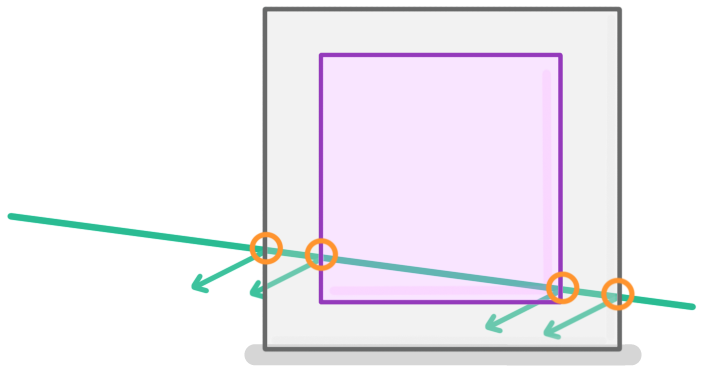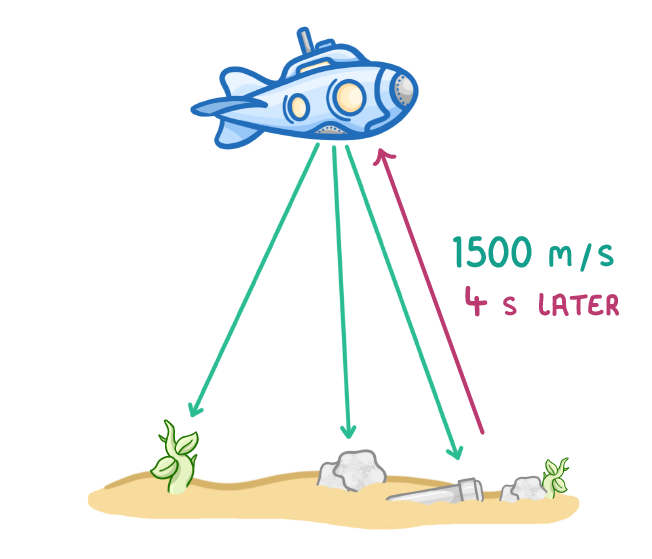Ultrasound & Infrasound
This lesson covers:
- What 'ultrasound' is, and how it's produced
- The reflection and refraction of ultrasound at the boundary of two materials
- The uses of ultrasound in medical imaging, quality checking, and sonar
- What 'infrasound' is
Ultrasound is:
Sound with frequencies above human hearing (above 20,000 Hz)
Sound with frequencies below human hearing (below 20 Hz)
|
Bats naturally produce ultrasound for:
(Select all that apply)
Scaring away predators
Echolocation
Communication
|
Ultrasound can be produced using a:
Light
Speaker
Microphone
|
Ultrasound is:
Harmful radiation
Harmful sound vibrations
Safe
|

thickness / loudness / time
Ultrasound reflects off of the boundaries between mediums of different densities.
The taken for ultrasound to bounce back to the receiver can be used to calculate the of the medium.
|

reflect / cracks / solid
Ultrasound can be used to check for in products. The ultrasound would off of the crack and be detected.
|
distance / sonar / boats
Ultrasound is used as by and submarines. By reflecting the ultrasound off the sea floor, we can calculate the from the sea floor.
|

Ultrasound travels at 1500 m/s in seawater.
It takes 4 seconds before for a pulse of ultrasound emitted from the submarine towards the seafloor is detected again.
What is the distance between the submarine and the sea floor?
m
|
Infrasound
Infrasound waves are sound waves with frequencies below 20 Hz. This means their frequency is too low for humans to hear.
Other animals, such as elephants and whales, can hear infrasound and use it for communication. Natural events such as earthquakes, avalanches and volcanic eruptions can also produce infrasound waves.
Which frequency of waves are classed as infrasound?
More than 20,000 Hz
Between 20 Hz and 20,000 Hz
Less than 20 Hz
|